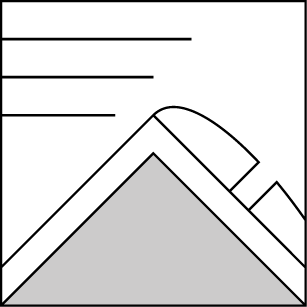Basic Information
Observation Details
Observation Date:
April 5, 2022Submitted:
April 5, 2022Observer:
SAC - Scott SavageZone or Region:
Banner SummitLocation:
Banner Summit: Cape Horn Summit to Deer Ck Summit (6400-7600': many aspects)Signs of Unstable Snow
Recent Avalanches?
YesCracking?
None ExperiencedCollapsing?
None ExperiencedBottom Line
Nearly all exposed middle elevation terrain where I traveled was affected by the wind: scouring, cross-loading on the sides of gullies, loading near ridgetops, loading near rocks and terrain features, surface dunes and ripples. I saw one small natural slide in wind-loaded terrain. It wasn't big enough to bury a person, but the thin debris pile was at least 400' wide and wrapped around a ridge. I didn't get to upper elevation terrain. At lower elevations, the mix of rain (crust) and snow made for stable but bad riding conditions (no wind-loading).
Media/Attachments

Advanced Information
Weather Summary
Cloud Cover:
Mostly CloudyTemperature:
Teens and low 20s FWind:
Moderate , WNew/Recent Snowfall:
HN=15-20cm (6-8") from 7000'-7700'. It rained from 6400-6800', where the HN was 5-15cm.Skies ranged from partly cloudy to obscured with light snow showers. Intermittent, gusty winds were running out of snow to transport.
Avalanche Observations
| # | Date | Location | Size | Type | Bed Sfc | Depth | Trigger | Comments | Photo |
|---|---|---|---|---|---|---|---|---|---|
| 1 |
N side of Cape Horn Summit W 7500 |
D1 | SS | N-Natural | W-NW aspect for most of the slide, but also wrapped around to W-SW. Debris was over 400 feet wide. Unknown bed surface or depth as winds had obliterated all signs of the crown and flanks. Debris was only about 1 ft thick except where it piled up a few feet deep on the road. |

|
No large slab avalanches observed in the northern Sawtooths from Williams Peak to Trap Creek, glassed during period of decent visibility.
Snowpack Observations
Hand pit observations showed the old ice surface was rough and textured on most slopes below 7600', allowing the new snow to bond fairly well. The old surface was generally smoother in areas that frequently see strong winds.
6400-7000': New snow = some dry new snow on old ice surface with mid-storm rain crust and FC above that, rain crust was 4cm thick below 6000' tapering to 1cm around 6800' then to a 1cm thick dense but dry layer at 6900' then to strictly dry snow at 7000'. There was 2-3cm of dry low density snow above the rain crust from 6700-6850'. Below the new snow, it's knife/missile hard ice for a ways.
7000-7600': 15-20cm (6-8") PP (fairly low density) above the hard ice

Avalanche Problems
| Problem | Location | Distribution | Sensitivity | Size | Comments |
|---|---|---|---|---|---|
 Wind Slab
Wind Slab
|
|
Unknown |
Layer Depth/Date: 10-30cm Comments: I did not observe upper elevation terrain. Most exposed slopes at middle elevations where I traveled were wind-affected. At lower elevations, the rain limited the snow available for transport. |
What I observed was stubborn/well-bonded to the old icy surface, but I also saw a 400' wide natural slide. Guessing the old surface was smoother as you climbed above 7600' into more exposed terrain?
The new storm snow could become more sensitive (wind slab/dry loose/wet loose) at middle and upper elevations on the first calm, sunny day.
Terrain Use
I planned to avoid wind-loaded starting zones and tracks in all significant/large avalanche paths. I was traveling solo, but I would have gone with the same plan if I had a partner.

